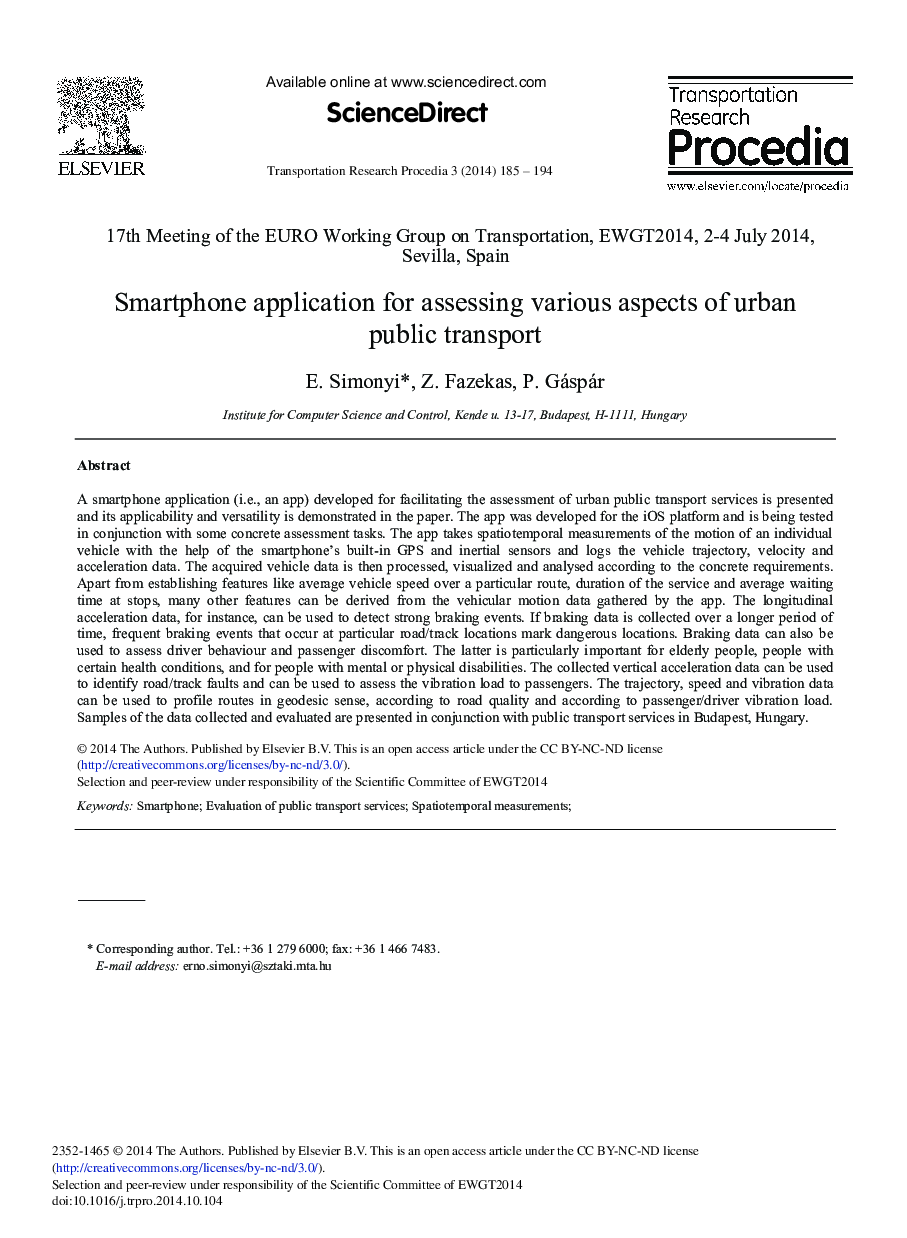| Article ID | Journal | Published Year | Pages | File Type |
|---|---|---|---|---|
| 1106396 | Transportation Research Procedia | 2014 | 10 Pages |
A smartphone application (i.e., an app) developed for facilitating the assessment of urban public transport services is presented and its applicability and versatility is demonstrated in the paper. The app was developed for the iOS platform and is being tested in conjunction with some concrete assessment tasks. The app takes spatiotemporal measurements of the motion of an individual vehicle with the help of the smartphone's built-in GPS and inertial sensors and logs the vehicle trajectory, velocity and acceleration data. The acquired vehicle data is then processed, visualized and analysed according to the concrete requirements. Apart from establishing features like average vehicle speed over a particular route, duration of the service and average waiting time at stops, many other features can be derived from the vehicular motion data gathered by the app. The longitudinal acceleration data, for instance, can be used to detect strong braking events. If braking data is collected over a longer period of time, frequent braking events that occur at particular road/track locations mark dangerous locations. Braking data can also be used to assess driver behaviour and passenger discomfort. The latter is particularly important for elderly people, people with certain health conditions, and for people with mental or physical disabilities. The collected vertical acceleration data can be used to identify road/track faults and can be used to assess the vibration load to passengers. The trajectory, speed and vibration data can be used to profile routes in geodesic sense, according to road quality and according to passenger/driver vibration load. Samples of the data collected and evaluated are presented in conjunction with public transport services in Budapest, Hungary.
